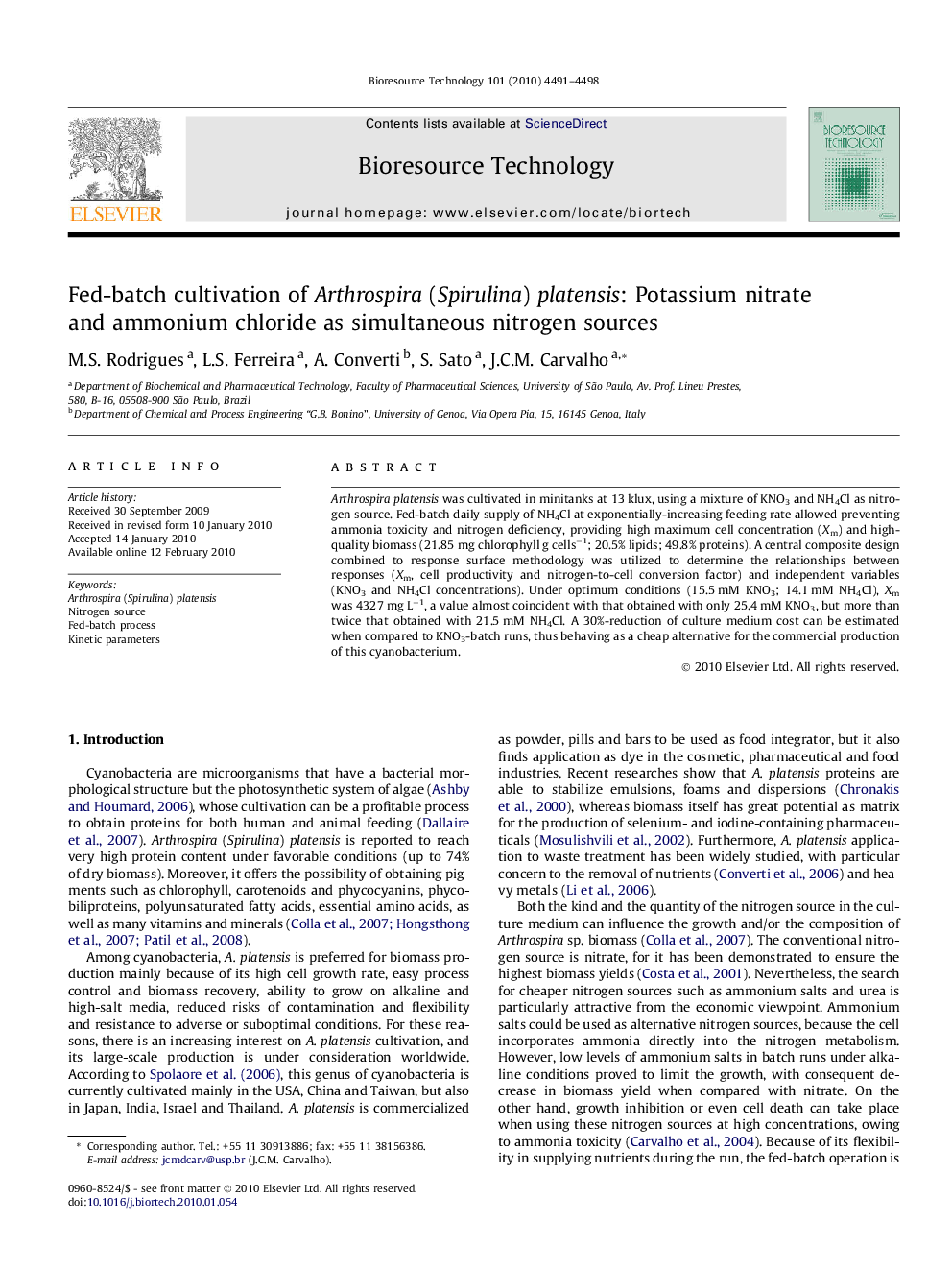| Article ID | Journal | Published Year | Pages | File Type |
|---|---|---|---|---|
| 10395631 | Bioresource Technology | 2010 | 8 Pages |
Abstract
Arthrospiraplatensis was cultivated in minitanks at 13 klux, using a mixture of KNO3 and NH4Cl as nitrogen source. Fed-batch daily supply of NH4Cl at exponentially-increasing feeding rate allowed preventing ammonia toxicity and nitrogen deficiency, providing high maximum cell concentration (Xm) and high-quality biomass (21.85 mg chlorophyll g cellsâ1; 20.5% lipids; 49.8% proteins). A central composite design combined to response surface methodology was utilized to determine the relationships between responses (Xm, cell productivity and nitrogen-to-cell conversion factor) and independent variables (KNO3 and NH4Cl concentrations). Under optimum conditions (15.5 mM KNO3; 14.1 mM NH4Cl), Xm was 4327 mg Lâ1, a value almost coincident with that obtained with only 25.4 mM KNO3, but more than twice that obtained with 21.5 mM NH4Cl. A 30%-reduction of culture medium cost can be estimated when compared to KNO3-batch runs, thus behaving as a cheap alternative for the commercial production of this cyanobacterium.
Related Topics
Physical Sciences and Engineering
Chemical Engineering
Process Chemistry and Technology
Authors
M.S. Rodrigues, L.S. Ferreira, A. Converti, S. Sato, J.C.M. Carvalho,
